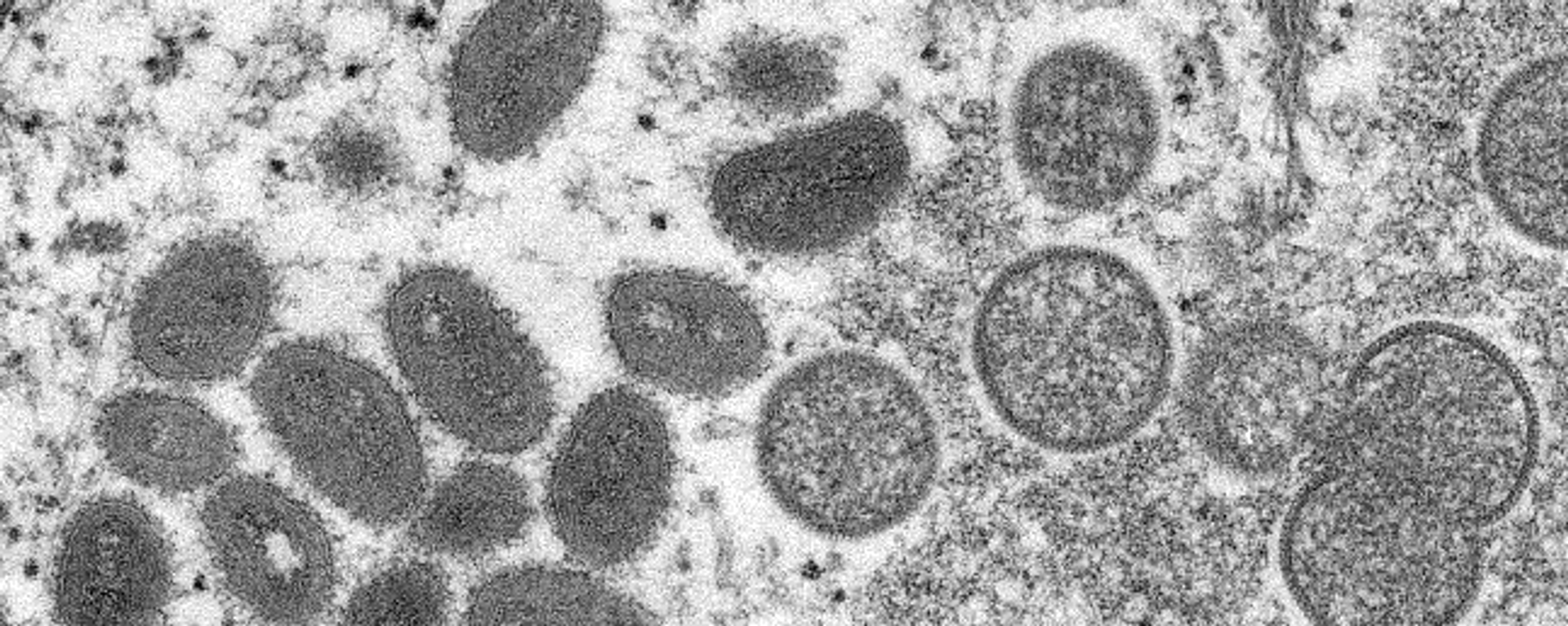'Let Us Get Vaccines': Africa's CDC Says Only Region With Monkeypox Deaths Getting No Jabs
18:34 GMT 28.07.2022 (Updated: 11:36 GMT 23.11.2022)

© AFP 2023 / ALAIN JOCARD
Subscribe
Monkeypox virus (MPXV) has long been endemic to western Africa, where some strains can have a mortality rate as high as 10%. Despite having had more than 2,000 cases this year, vaccines against the virus are nowhere to be found.
As of Thursday, not a single dose of monkeypox vaccine has been sent to Africa to help treat infections there, even as the United States and other countries place orders for millions of doses. Now, the Africa Centers for Disease Control and Prevention (ACDC) is trying to change that.
"Let us get vaccines onto the continent," acting ACDC head Ahmed Ogwell told reporters. He described the situation as yet another one in which the continent of 1.3 billion people was being left behind - an echo of the ongoing COVID-19 pandemic, for which Africa is also the least-vaccinated continent.
"The solutions need to be global in nature," Ogwell said. "If we’re not safe, the rest of the world is not safe."
Earlier this week, the World Health Organization (WHO) declared monkeypox an "extraordinary" situation that qualifies as a global health emergency.
According to ACDC numbers, as of July 25, at least 2,031 cases of monkeypox have been detected in Africa, of whom 75 people have died. That contrasts sharply with the roughly 18,000 cases detected elsewhere, mostly in Europe and North America, where no deaths have been reported.
Still, the US CDC has distributed 320,000 shots of the monkeypox vaccine Jynneos and ordered another 2.5 million from its Danish maker, Bavarian Nordic, in the coming months. The European Union and several European countries have also penned separate contracts with BN for millions more.
In addition to Jynneos, the smallpox vaccine is also believed to provide strong protection against monkeypox infection. Monkeypox, variola (smallpox), and vaccinia - the virus from which the smallpox vaccine is made - are closely related members of the orthopoxvirus genus, and monkeypox symptoms largely present as milder forms of smallpox symptoms, including the trademark pus-filled lesions that cover the skin.
One theory floated for the increase in monkeypox cases since the first cases were detected in the 1970s is that the end of mass smallpox vaccination - thanks to that disease’s total eradication - has reduced immunity to orthopoxviruses in the public.
All three viruses are spread primarily by skin contact, but can also be spread by air in cases of prolonged close exposure. “Anyone who comes into physical contact with someone with symptoms or an infected animal, is at increased risk of infection,” the United Nations noted in a recent news bulletin.
“The condition can be spread from one person to another through close physical contact, including sexual contact. However, it is currently unknown whether it can be spread through sexual transmission (for example, through semen or vaginal fluids). However, direct skin-to-skin contact with lesions during sexual activities can spread the virus,” the bulletin continues.
“The rashes can also resemble some sexually transmitted diseases, such as herpes and syphilis. This may explain why several of the cases in the current outbreak have been identified among men seeking care at sexual health clinics,” the UN explained. “The risk of becoming infected is not limited to sexually active people or men who have sex with men. Anyone who has close physical contact with someone who is contagious is at risk."
The US CDC and WHO have also both stated that the virus is not a sexually transmitted infection, but despite the warning, have continued to treat the 2022 outbreak as one driven by gay and bisexual men. As a consequence, many districts in the US will only test patients for monkeypox if they are gay or bisexual men, and the vaccine is only being made available to those populations, as well as transgender women and sex workers of any gender.
Critics have noted that this creates a false picture of the infection as being one primarily spreading among queer people assigned male at birth, and the UN has protested that media coverage of the outbreak is “homophobic and racist.” Because of the media coverage, which has largely used photos of Africans showing monkeypox lesions, a group of African doctors has successfully petitioned the WHO to consider renaming the monkeypox virus.


